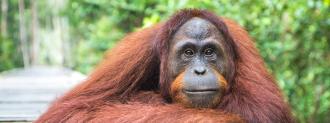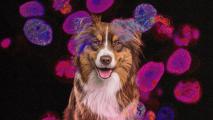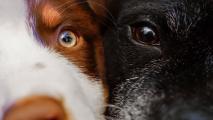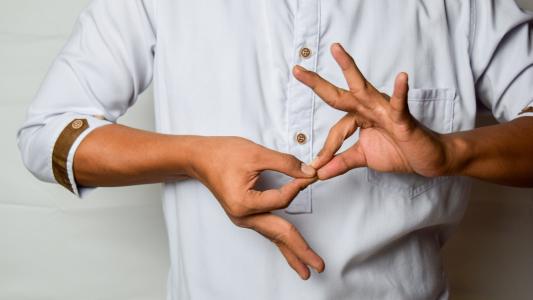The San Diego Zoo has now vaccinated nine of their great apes against COVID-19, reports the San Diego Union-Tribune’s Jonathan Wosen.
Five bonobos and four orangutans have gotten their jabs thus far, with three more bonobos and a gorilla currently on deck. The apes received experimental shots from the animal health company Zoetis.
The move comes on the heels of the first reported cases of great apes being infected by COVID-19, after a gorilla troop caught the virus from an asymptomatic trainer — despite the trainer wearing personal protective equipment.
“That made us realize that our other apes were at risk,” chief conservation and wildlife health officer for the San Diego Zoo Wildlife Alliance Nadine Lamberski told Wosen. “We wanted to do our best to protect them from this virus because we don’t really know how it’s going to impact them.”
Similar Genes, Similar Risk
The great apes — gorillas, orangutans, bonobos, and chimpanzees — are our closest living relatives; chimps and bonobos, their easy-going, promiscuous brethren, share almost 99% of our DNA.
Unsurprisingly, there’s quite a bit of crossover when it comes to zoonotic diseases across all primate species — and that includes us.
Howler monkeys have contracted yellow fever, a nasty mosquito-borne infection in Bolivia. Infamously, HIV crossed over into humans from chimpanzees, who in turn had gotten it from monkeys. Grivet monkeys were the vector for the first cases of the vicious, Ebola-like disease caused by the Marburg virus, while gorillas are deathly susceptible to Ebola proper.
SARS-CoV-2, the spiny egg virus that causes COVID-19, has so far infected a veritable Noah’s Ark of animals.
In New York, felines on both ends of the spectrum — lions and tigers at the Bronx Zoo and house cats — have been infected. In Hong Kong, two dogs caught the virus from their owner.
And the virus’s ability to infect minks and then jump back into people sparked a complete culling in Denmark, where tens of millions of the slender creatures, prized and farmed for their fur, were euthanized and buried by backhoes in mass graves.
When the San Diego Zoo’s gorilla troop began, as the Washington Post put it, acting sluggish and then coughing, it served as a wake up call to those tasked with protecting the rare creatures. The risks of giving the apes an experimental vaccine were considered worth it in the face of the virus.
“It makes quite a bit of sense. These animals are incredibly precious,” Pascal Gagneux, an expert on ape evolution at UC San Diego, told the Union-Tribune’s Wosen. “There’s a very finite number of great apes in captivity.”
Diddy Kong Racing (To Be Vaccinated)
Zoetis’ vaccine delivers a piece of SARS-CoV-2’s spike protein for the immune system to recognize, according to Wosen. It’s a similar technique to the one used to create Novavax’s COVID-19 vaccine.
The company was testing the vaccine in cats, dogs, and minks, and found itself with 27 doses to spare.
“This isn’t the norm. In my career, I haven’t had access to an experimental vaccine this early in the process and haven’t had such an overwhelming desire to want to use one,” Lamberski, the wildlife health officer, told National Geographic.
The apes were voluntarily vaccinated in late January and early February — if they chose to sit down and receive their jab, they got them. The vaccine was administered in two doses, three weeks apart, and wasn’t a novel experience — Wosen reports that they regularly receive measles and flu shots.
Some of the younger apes weren’t quite so calm, and the zoo will try again when they build up some more comfort to the idea, rather than risking anesthesia.
There’s been no adverse effects thus far, though some of the apes’ behaviors — rubbing their heads and the sites of their injections — suggests they may be experiencing the itchiness and headaches that are common side effects of vaccination in humans.
“This is a really precious opportunity to observe what happens to endangered great apes when they’re vaccinated to a potentially important disease,” Gagneux told Wosen. “Nothing prevents COVID-19 from starting to infect the wild populations.”
An orangutan and bonobo have already had their blood drawn to measure their antibody response, which should show how well the vaccine is working.
We’d love to hear from you! If you have a comment about this article or if you have a tip for a future Freethink story, please email us at [email protected].






